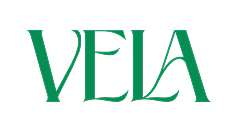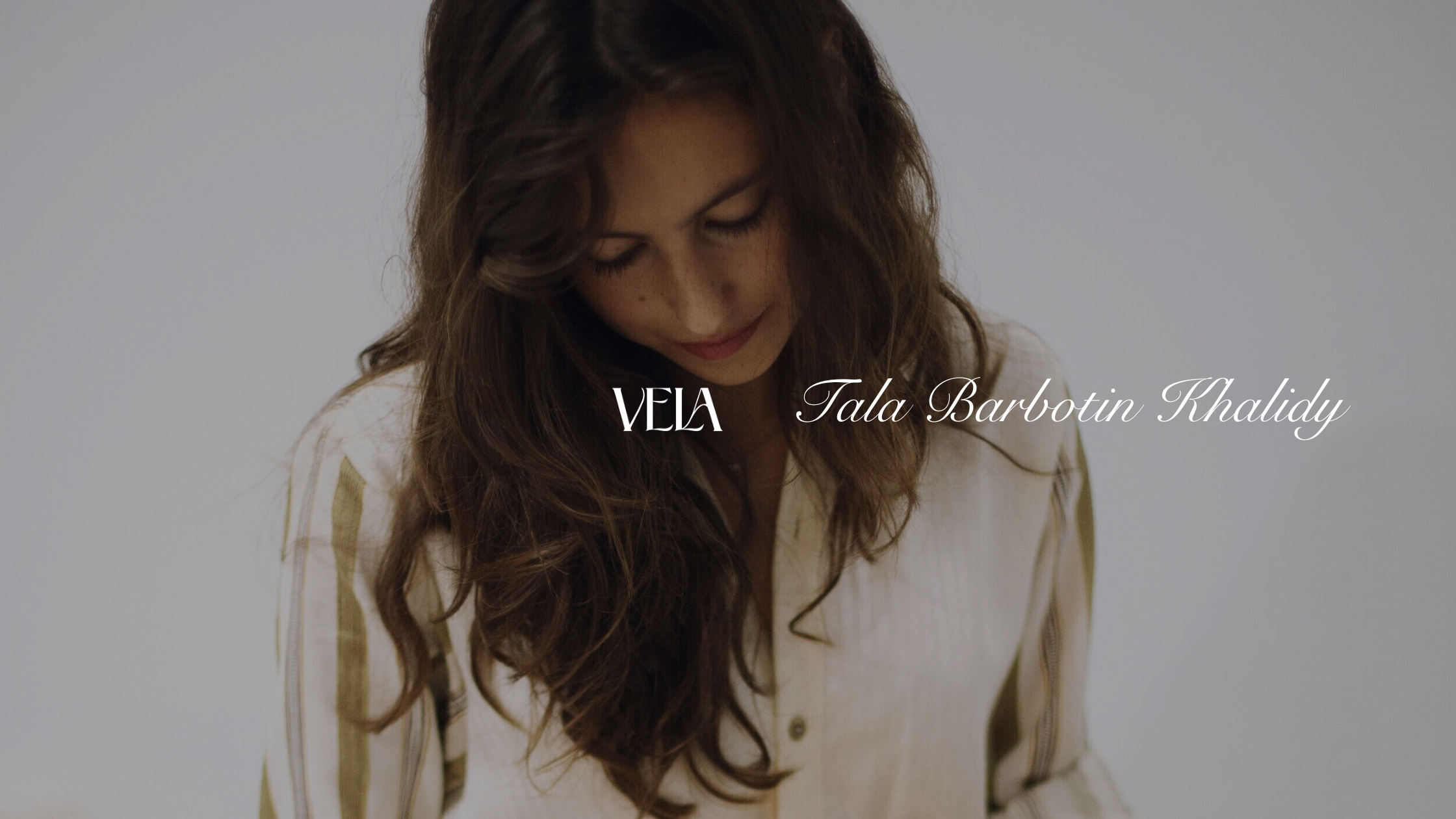VELA sat down with French-Lebanese designer, Tala Barbotin Khalidy, to learn more about her groundbreaking work to revitalize and preserve Syrian and Levantine fabrics through sustainable practices — and her inspiration behind the substantial work of curating and designing pieces made of Syrian and other Levantine materials in a time when the region is facing challenges on many fronts.
Syrian fabrics and textiles hold significant cultural, social, and economic significance dating back centuries — it is one of the country’s most notable forms of intangible cultural heritage. Tala’s work is important because without relentless measures being taken to preserve the dying craft — the beauty and tradition of Syrian and Levantine fabrics, textiles, and crafting may die forever.

Photographer - Nadia Irshaid Gilbert (@Sauce)
Iman: Hi Tala, it’s nice to finally meet you. What led you to the decision to establish a design brand that addresses the revitalization and maintenance of Syrian and Levantine craft techniques and fabrics?
Tala: I was born and raised in Paris. I am French-Lebanese-Syrian. We've been doing the brand for about three years full time but it's a project that I started when I was in school at Parsons School of Design studying fashion design and doing my Bachelor of Fine Arts. The brand is revitalizing local crafts from Lebanon, Syria, and the larger Levant region. We are trying to incorporate local crafts and fabrics in contemporary clothing designs so that we can bridge different cultural understandings between the West and the East and also create jobs and support artisans who are living in Lebanon and who are specialized in these techniques that are disappearing and train new people. All of our fabrics are sourced from Syria. They are all Syrian from Damascus. We work with a merchant who's been working with my family for three generations on my Syrian grandmother's side. We also use crochet techniques. So all of our crochet is handmade by artisans in Lebanon, craftswomen in particular. And they're not necessarily all Lebanese. Some are Armenian, some are Syrian.
She had a store in Lebanon and she was a designer as well, focusing on both clothing and also metalware, silverware, interior, and furniture. Her store is called Artisans du Liban et d 'Orient — it was a very iconic shop in Beirut where people would go and get local clothing, but also very elaborate embroidered pillows. It was just a big institution. I spent a lot of time during my childhood in the store when I was a little girl, and it kind of inspired me to come back to these techniques that I had seen throughout my childhood while I was playing salesperson, while I was just hopping around the shop and things like that.
Iman: What has your experience been like curating and finding all of these certain fabrics and textures? What has that process looked like for you? Are there any challenges?
Tala: Some of the challenges have been logistical sense, getting materials when it comes to crochet for instance, or embroidery…. getting yarn, getting thread, etc..Lebanon is going through a financial crisis right now, and we were relying a lot on imports and exports, and that has just died down a little bit over the past couple of years. It's been more challenging to get primary materials for this. Our Syrian fabrics are easily accessible but it's still something that we're figuring out. We have this yarn from Turkey, but how do we get it to the artisans? Additionally, the translation of a significantly symbolic cultural fabric into a more international fashion sphere has been a challenge. You don't wanna make it so that all of the designs that I am making are only considered cultural designs and not applicable to everyday use.
It's sort of like bridging the gap between representing my culture, but also, personal identity, creativity, and freedom of expression, with your style. Over the years, designing and keeping those two things in mind has been a struggle. How do I make designs that are still respectful and relevant to what the fabric is and how do I incorporate it in this modern fashion landscape where this fabric is virtually unknown?
Iman: You talk a lot about “changing the relationship” we have with clothes by wearing items that represent our history/identity…. what brought you to that understanding?
Tala: When I was studying for my fashion design BFA, I was exposed to so many resources around sustainability and how it's only in the past 60-70 years that people have considered clothing as disposable. That's because it's been advertised and marketed this way. Before, clothing was kind of marketed along the same line as cars — it was like an investment. It was something that you would have for a very long time, and so you would invest in it and then repair your clothes, you would take care of them, you wouldn't tumble dry them. It's kind of a more recent shift. And the thing with cultural ways of seeing clothing is that culturally we have sustainable traditions that are already embedded, right? It's like reusing even to the point where whatever clothes you have, you repair them, you take care of them, and if they're at the end of their life, you try and make kind of a circular loop around it. It used to all be repurposed. The sustainable aspect is embedded in Levantine and Arab culture. We need to pay more attention to those traditions because they are saying something relevant to today's landscape.
I think that when clothes have a story…. they have a very specific identity. They have a very relatable story that shows, even if it's like the story of the fabric, the story of a motif, the story of a collection. I try to incorporate storytelling in all the different aspects of my design so that when someone is buying a clothing item, they get to feel that and it creates value. It automatically makes it more that you're going to care for these items of clothing. Sometimes it's very luxurious silk fabrics and you have to go and dry clean them, and you have to do all of these things to like, take care of it over time. If there is a story behind it, you're more likely to do that in general, and you can build on top of that, add your own story, you know, if your clothes wear down, add an embroidery motif, add a little patch over here. Like, you know, I've had people use button-downs and skirts and skirts as button-downs and kind of just play with it and around it. That's something that I want with my brand in particular.

Photographer - Nadia Irshaid Gilbert (@Sauce)
Iman: Can you describe some of the commonly-used motifs in Syrian patchwork and the materials present in Levantine fabrics that you use in your designs?
Tala: Sayye silk is one of the materials that I use the most. It is a traditional Syrian fabric and is made out of a 100% cotton-silk blend. Nowadays, people are beginning to mix Sayye with polyester and nylon and produce it in factories…. but we use the most authentic blend. It is really important to not use synthetic materials. It is a traditionally striped fabric, it is something that has been around Syria for a long time. We try to incorporate traditional motifs on top of the Sayye striped base, so we play around with the stripes of Sayye when designing pieces. We have incorporated Moire fabric, another silk fabric from Syria, it is made when two pieces of silk are pressed together with an industrial press, creating a watermark. We use the Syrian Atla fabric as well. We use several endangered embroidery techniques from the Levant as well. The Aghabani embroidery technique is usually used for tablecloths and furniture but it is made with chain-stitch embroidery, I often incorporate patches of Aghabani in denim. Another technique is the Tarq embroidery technique which is weaving and embroidering metal thread into fabric, this technique originates from Baalbek, Lebanon — we work with artisans from Baalebk to create pieces using the Tarq technique. I design most of our motifs, and a lot of them have cultural significance, such as the Olivier motif which is an olive tree and is an important symbol for various cultures in the Levant. I recently did a collection based on Syrian courtyards so I used tile and architectural motifs, so it just varies on my interpretation of the surroundings.
Iman: You mention that embroidery heritage from the Levant/Sham region can be a restorative practice on your website… can Levantine embroidery practices serve a larger purpose?
Tala: People in general crave restorative practices and tactile experiences. There is something deeply regenerative about using a piece of fabric and thread to create something. It is meditative. By getting people to connect with fabric and thread, it makes them appreciate how clothes are made and gives them tools to repurpose, embroider, and embellish their clothing. It is through the act of embroidery, which is in itself meditative, that we reach a thought-provoking state. It leaves space for people to reflect, and that is what I think is a rebellious act. I have led many embroidery classes and workshops in the past in the larger New York area. Levantine embroidery is a way to reconnect with yourself, you come out of embroidery feeling more energetic and less drained. I would also add that, traditionally, embroidery was reserved to be a “women's” activity where women did it communally and together. It was only after industrialization and when mass production that men started to take over the craft, thereby taking it over. Through the embroidery classes, I hope to help women reclaim the craft and not see it as a tool for consumption.
Iman: What is your vision for the future of the revitalization and preservation of the disappearing art of Syrian/Levantine fabrics, crafts, and weaving techniques?
Tala: I believe there is so much to revive and preserve when it comes to our traditional heritage, such as beauty, and scent, every form of art has so much history. We are living at a pivotal point in time where people are taking their heritage and building something new with it. I hope to see more of that. Remembrance of heritage is important, but I wonder how trailblazers will take these traditions forward. For my brand, I hope to see it all around the world — we are already selling in Japan. I want it everywhere so people can wear the clothes, feel good about it, and that my heritage is celebrated everywhere.



2 comments
What a lovely interview with a wonderfully creative designer. I appreciate her approach to modern sustainable design with traditional fabrics and methods. Thank you!
Salam. I love your scarves but the last jersey scarves that I bought were not of the same quality as the previous I bought. The material is thicker and it rolls Im wondering if you could comment
Leave a comment